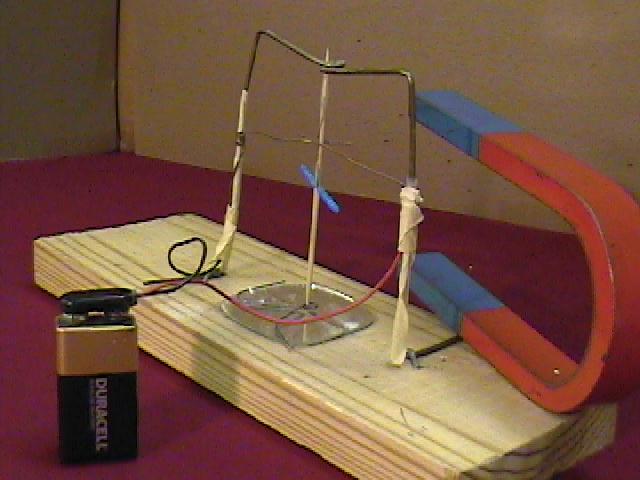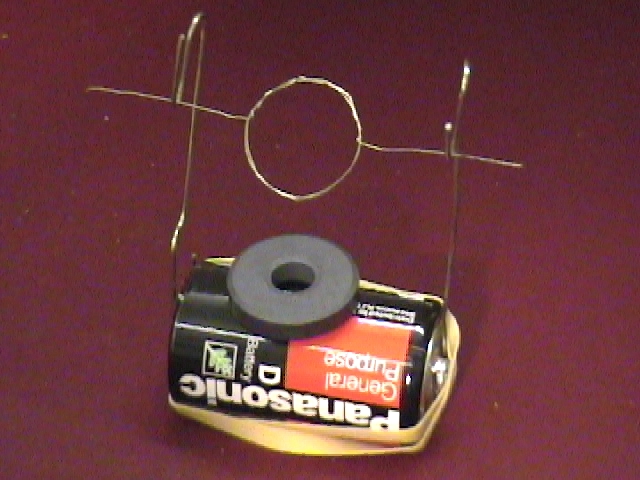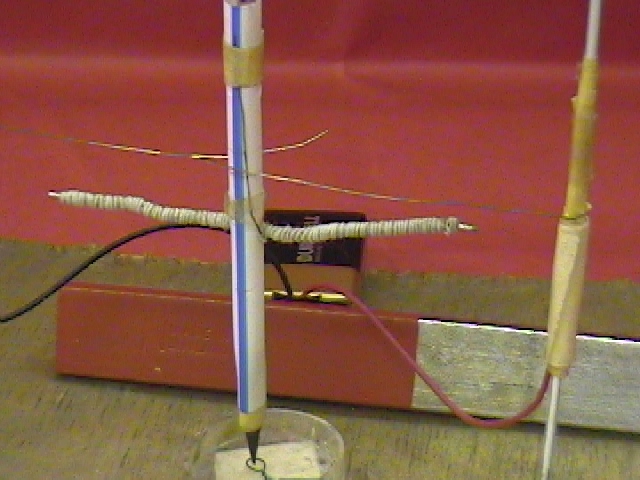

EDUCATIONAL ELECTRIC MOTORS ASSEMBLY TUTORIALS
Windows/Mac version - PDF Format ©
Welcome to the Educational Electric Motors site. We designed four unique and marvelous products to teach students how to build real electric motors that work very well. The four types of motors are: Toothpick, Straw, Paperclip, and Cork motors. As a result of this hands-on experience, students will understand the basic assembly and physics of an electric motor, including the critical roles played by electricity and magnetism when a motor is working. In average, the cost of the materials needed to build each type of motor for a class of 20 students is about $60 (year 2022).
All four motors can be constructed as a laboratory activity in the area of electricity or as a science project. The materials needed, the guidelines, and the step-by-step planning and construction are clearly explained using clear text, attractive drawings, and high-quality digital pictures. All four assembly tutorials are in pdf format and are sold in Teachers Pay Teachers.
With the help of text, drawings, digital pictures, and great looking animations, students are guided step-by-step in assembling each part of every electric motor. If the students follow the sequence of instructions and pictures in each tutorial, there is no doubt their motors will work. In addition, instructions are also provided about the best places in the Internet where the wire for the coils and magnets can be purchased.


The picture above shows a Toothpick motor. As it can be observed, a steel needle penetrates the toothpick. A coil is built around the needle.

The most important part of the electric motor is the coil, which is where a fluctuating magnetic field is created when the motor is spinning. This educational product explains step-by-step, using text and dozens of digital pictures and drawings, how to make each coil from the beginning to the end. By simply following the sequence of the digital pictures, the students will gain plenty of knowledge to make a coil that will work succesfully.


This learning experience can be adapted by science teachers as a motivating lab activity in electricity for an entire class. Teachers could use a large model to guide the students in making the coil and other parts of the electric motor. If a computer lab is available, the students just need to follow the instructions shown in the different computers. After all the needed materials have been obtained, it takes between 1 and 2 hours to assemble and test successfully a toothpick motor.

The animations of about 40 different motors are incorporated in the software.

Another electric motor that students can construct is the Paperclip motor. This motor is the simplest of the four to make. To assemble this motor takes about 10 minutes, which is basically the time needed to make the coil. Students are suggested to construct several coils, each one containing from 1 to 20 loops of wire, and later check which coil appears to be turning the best.
For this project students need to use insulated wire, from gauge 20 to gauge 30, to make the coil. After a coil has been made, a razor blade is needed to scratch off some of the thin layer of insulation. The coil is then supported by two large uninsulated paper clips that have been reshaped, as it is shown in the picture above and in the animation below. The object shown on top of the D size battery is a ring ceramic magnet. To supply the electric current, instead of the D size battery, an old power supply of a cellular phone and a small plastic bottle could be used.
This oustanding product clearly explains the different materials that are needed to build all four motors, and how to get them. The D size battery, the wire and the magnets can be purchased at Walmart, Home Depot, Ebay, Amazon, and in science supply stores. A good news is that the rest of the materials, a rubber band, a cork, two large paper clips, and a small piece of card board are found in most homes.

 ;
;
The Straw motor is basically a larger version of the toothpick motor. The toothpick and the steel needle are substituted for a drinking plastic straw and a straight steel wire, both about 12 cm in length. The wire from a small paperclip is appropriate for this project. The Straw motor requires more electricity and a stronger magnet to operate. Since this motor requires a greater electric current than a toothpick motor, the power supply of an old cellular phone, a 9 volt battery, or a USB power adapter could be used. The complete assembly and testing of this electric motor takes from 1 to 2 hours.
The central part of this electric motor is a medium size cork. Of the four motors studied, the coil of the cork motor is the one that uses the greatest amount of wire. This motor looks very fascinating when it is turning. It takes approximately 2 hours to assemble the Cork motor.



Note:
If you want to purchase any of the four electric motors turorials, please use the different links to Teachers Pay Teachers shown in this page.
Ceres Science
www.ceressoft.net
http://motors.ceressoft.net
Link to Teachers Pay Teachers
https://www.facebook.com/ceressoft
E-mail: science@ceressoft.net
Please click any of the links below to jump to different parts of our Web site: _